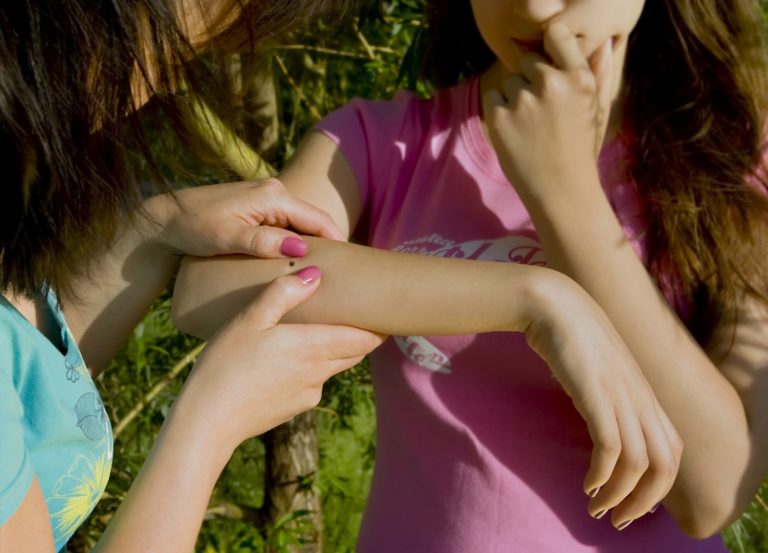Let’s talk ticks! Ticks are small arachnids (related to spiders) that are obligate exoparasites, which means that they need to feed on the blood of mammals, birds, reptiles or amphibians to survive. While ticks are a little gross to think about, the reason both parents and doctors alike worry about ticks is because of the other illnesses that they carry, namely Lyme disease, Rocky Mountain Spotted Fever, and Erlichiosis. Thankfully these illnesses are not that common and with a little bit of information we can protect our kids and patients, so let’s dive right in.
As any pediatrician worth their salt will tell you, an ounce of prevention is worth a pound of cure, so it’s a great place to begin. The best place to start is with knowing where ticks are likely to be. They are the most active in the warmer months of the year, April to September, and are generally found in grassy, brushy, or wooded areas or hitching a ride on a pet or wild animal. Ticks have tiny little legs so they can’t walk very far, therefore they hang out on tall grasses and brush and wait around until someone (or something) passes by that can move them around. In your own yard you can decrease the risk of ticks by mowing frequently, removing leaf litter, and placing a 3 foot barrier of wood chips between lawns and wooded areas. Use DEET containing bug spray on all persons over age 2 months when they are outside especially in the warm months of the year. Finally, do a tick check after coming inside and at least once a day in the summer months. Ticks like warm protected areas like the head especially behind the ears, armpits, belly button, waist, between the legs, and the backs of the knees. Ticks need more than 24 hours to transmit tick-borne illnesses so doing a full tick check every day ensures that you’ll get that blood-sucker off before it’s had time to give your little one a disease. For more information on prevention check out the CDC webpage: https://www.cdc.gov/ticks/avoid/index.html
Now, what to do if you’ve found a tick on your child? First and foremost: Don’t Panic. There are many tick removal devices on the market, however a pair of tweezers works just as well. Grasp the tick as close to the skin as possible and pull upward with steady, even pressure until the tick is removed. Do not twist or jerk the tick. Often parts of the tick are left behind, and as gross as it is, those parts do not need to be dug out. In fact digging at them often causes more damage and can lead to a skin infection. The body parts will get pushed out with time like any other foreign body. It is VERY important not to use any other methods for removal including but not limited to heat, nail polish, Vaseline, rubbing alcohol as this can cause the tick to vomit and actually increase the risk of tick-borne illnesses. Once you’ve removed the tick, get rid of it by flushing it down the toilet, putting it in a sealed plastic bag, or wrapping it in tape. There’s a great diagram of tick removal at https://www.cdc.gov/ticks/removing_a_tick.html
After a tick has been removed it is very common for there to be an itchy red bump at the site of removal that can last 2-4 weeks. This is nothing to worry about and the itching can be treated with antihistamines like Benadryl and Zyrtec. I usually recommend that parents mark the date of a tick removal on the calendar since any signs of symptoms will show up within 4 weeks, if more than that time has elapsed since the tick bite any symptoms are not related. The most common sign of Lyme disease is a circular rash at the site of the tick bite that always gets larger. I will have parents take pictures on their phone every day if they are not sure whether or not it’s getting larger. For other tick-borne illnesses children will have high fevers, rashes, and generally feel pretty sick. It is not recommended that anyone receive antibiotics prior to a diagnosis. These diagnoses are usually made clinically because blood tests are unreliable early in the illness when treatment is recommended. The CDC does NOT recommend testing of ticks as it is also unreliable and does not change management. Therefore there is no need to save ticks or bring them to a doctor’s visit. If you have more questions about ticks or tick-borne illnesses feel free to call our office or check out the CDC webpage at https://www.cdc.gov/ticks/index.html.
Alaina M. Brown, MD FAAP

